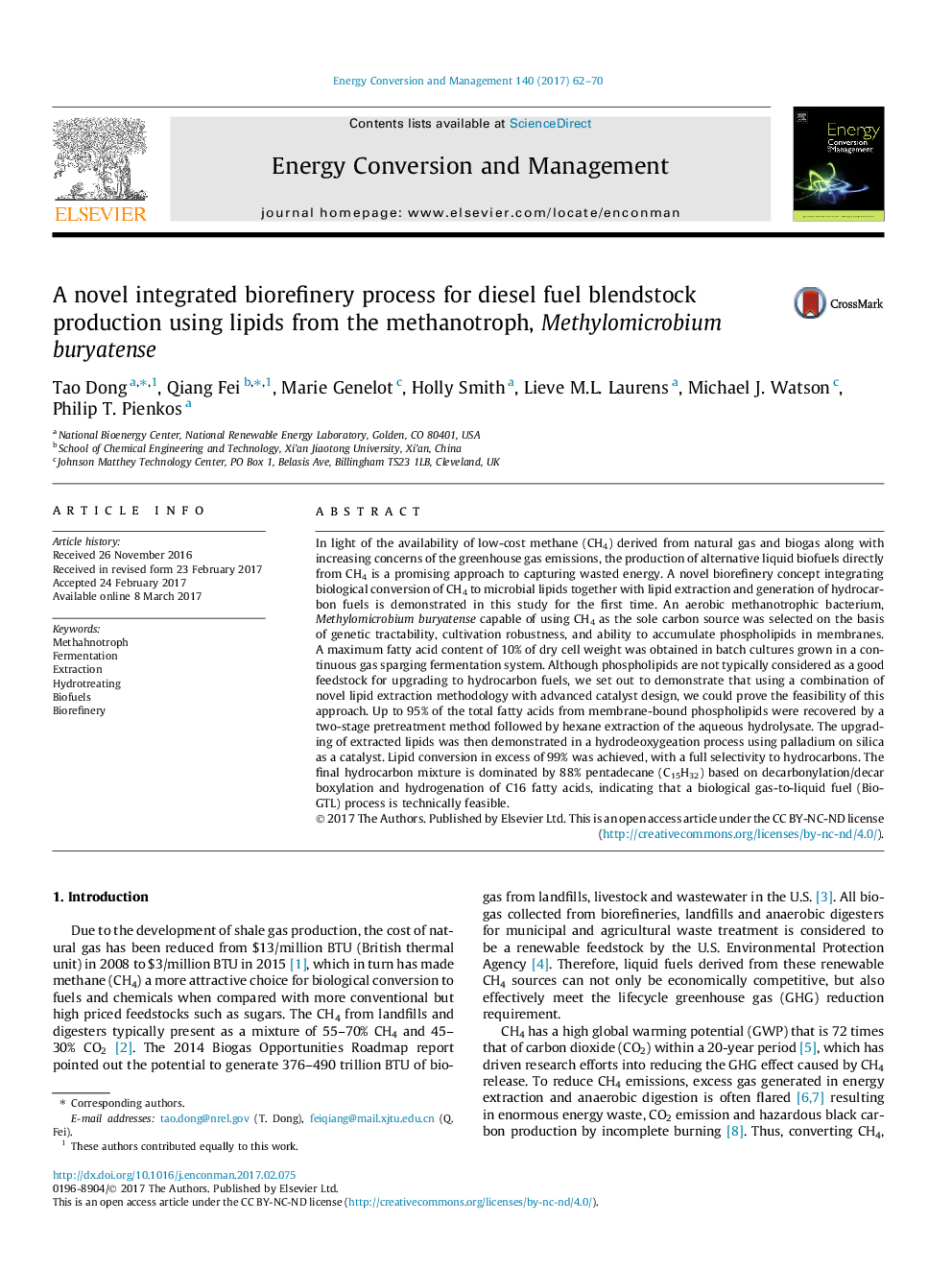| کد مقاله | کد نشریه | سال انتشار | مقاله انگلیسی | نسخه تمام متن |
|---|---|---|---|---|
| 5012866 | 1462822 | 2017 | 9 صفحه PDF | دانلود رایگان |

- CH4 was utilized as the sole carbon source to support high cell density and productivity.
- Up to 95% of the total fatty acids from membrane-bound phospholipids were recovered.
- Lipid conversion in excess of 99% was achieved, with a full selectivity to hydrocarbons.
- The final hydrocarbon mixture is dominated by 88% pentadecane (C15H32).
In light of the availability of low-cost methane (CH4) derived from natural gas and biogas along with increasing concerns of the greenhouse gas emissions, the production of alternative liquid biofuels directly from CH4 is a promising approach to capturing wasted energy. A novel biorefinery concept integrating biological conversion of CH4 to microbial lipids together with lipid extraction and generation of hydrocarbon fuels is demonstrated in this study for the first time. An aerobic methanotrophic bacterium, Methylomicrobium buryatense capable of using CH4 as the sole carbon source was selected on the basis of genetic tractability, cultivation robustness, and ability to accumulate phospholipids in membranes. A maximum fatty acid content of 10% of dry cell weight was obtained in batch cultures grown in a continuous gas sparging fermentation system. Although phospholipids are not typically considered as a good feedstock for upgrading to hydrocarbon fuels, we set out to demonstrate that using a combination of novel lipid extraction methodology with advanced catalyst design, we could prove the feasibility of this approach. Up to 95% of the total fatty acids from membrane-bound phospholipids were recovered by a two-stage pretreatment method followed by hexane extraction of the aqueous hydrolysate. The upgrading of extracted lipids was then demonstrated in a hydrodeoxygeation process using palladium on silica as a catalyst. Lipid conversion in excess of 99% was achieved, with a full selectivity to hydrocarbons. The final hydrocarbon mixture is dominated by 88% pentadecane (C15H32) based on decarbonylation/decarboxylation and hydrogenation of C16 fatty acids, indicating that a biological gas-to-liquid fuel (Bio-GTL) process is technically feasible.
Journal: Energy Conversion and Management - Volume 140, 15 May 2017, Pages 62-70